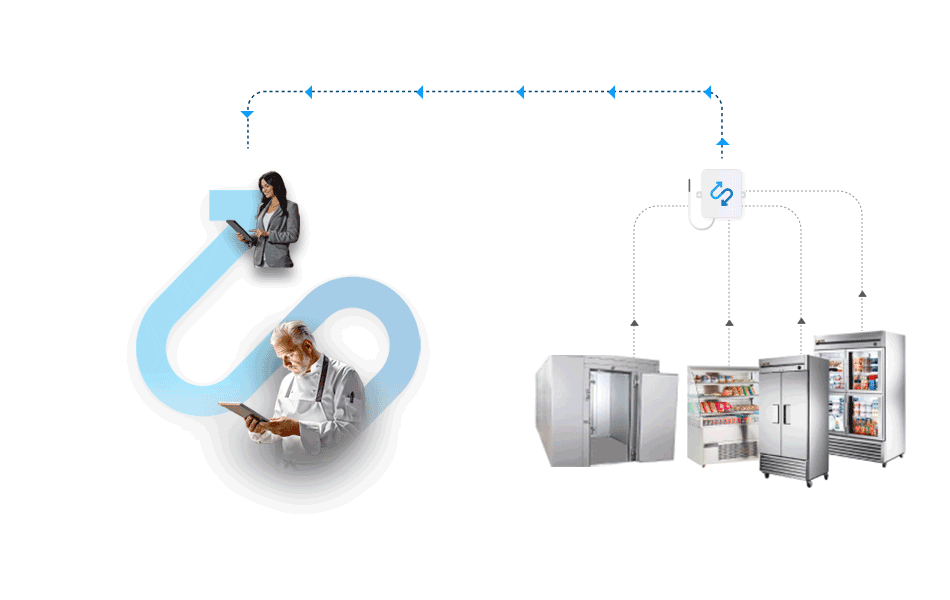As the manager of Multi-unit food service operations, whether it may be restaurant chains, franchises, or restaurant groups, you have been leading the forefront of adopting automation into their operations to streamline operations and improve efficiency.
We live in times where Smart is the new normal. But becoming a Genius is what is going to make your multi-unit restaurant business thrive, not just survive.
Unfortunately, many multi-unit brands fail to take the need for refrigeration equipment temperature monitoring seriously until they find themselves in a situation where it is sorely needed. In 2024, Still, most of the multi-unit operations still rely on error-prone and time-consuming manual monitoring practices such as pen & paper-based temperature logs. When it comes to automating equipment temperature monitoring, the adoption has been slower. Only 5% of restaurants use temperature monitoring technology.
Some restaurant chains resort to cure than prevention by paying for food spoilage insurance, However, Dried items or canned items are not covered through food spoilage insurance. Human errors such as disconnecting a refrigerated unit from a working power source would void coverage. To cover lawsuits or medical bills should your business serve contaminated food, you must take other insurance coverage measures. To cover equipment repair costs, you will have to take additional insurance coverage too.
Multi-unit restaurant operations must implement distributed systems to reduce food costs across all locations. Utilizing technology to streamline operations, such as refrigeration equipment monitoring is an important step in that direction. One of the main challenges for successful technology adoption in multi-unit restaurants is maintaining consistency and quality across all locations. Hence, multi-unit restaurant chains that adopt this shift into automation in equipment operations will see results in reduced food costs, improved profits, and increased workforce efficiencies.
In the dynamic world of multi-unit food service operations business, there are a few trailblazing organizations that set the benchmark for excellence. They are the pioneers, the avant-garde, and the early adopters of innovative practices that leave others watching their moves with admiration.
Multi-unit food service operations such as Starbucks are leading the shift in this space in the US and using IoT-based automated temperature monitoring solutions to remotely monitor refrigeration temperatures across their stores to drive efficiencies for employees, thereby giving best-in-class experiences to customers. As Starbucks executives talked about the solution in NRF’2023, the solution as simple as it may look, the complexity grows when it needs to be replicated across all stores. Starbucks executives also emphasized the need for an end-to-end solution from sensors to connectivity to dashboard/mobile app to training/support to have such initiatives succeed for any multi-unit operation.
New data from Restaurants Canada tells the story: 62% of restaurants are operating at a loss or barely breaking even – up 9% from July 2023 when it stood at 53%. This is compared to 10% pre-pandemic. This alarming statistic underscores the immense pressure on the industry. It also led to a notable upsurge in closures in 2023, with bankruptcies up 44% – the highest annual figure in a decade.
The multi-unit restaurant operations scene is changing. In these times of high food costs, growing competition, and thin margins, how you manage your food inventory storage in refrigeration equipment can make the difference between your multi-unit food service operation’s success and failure.









